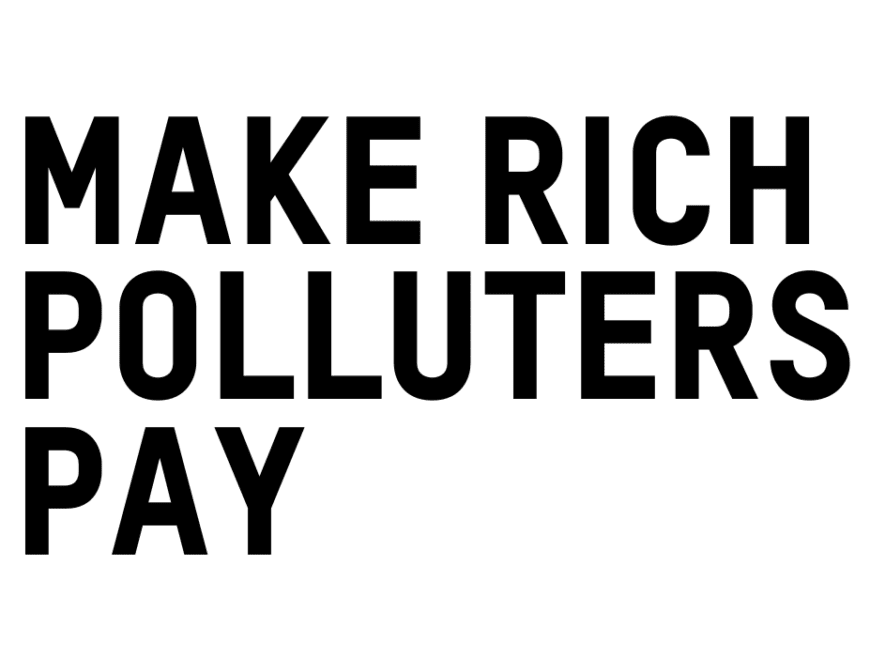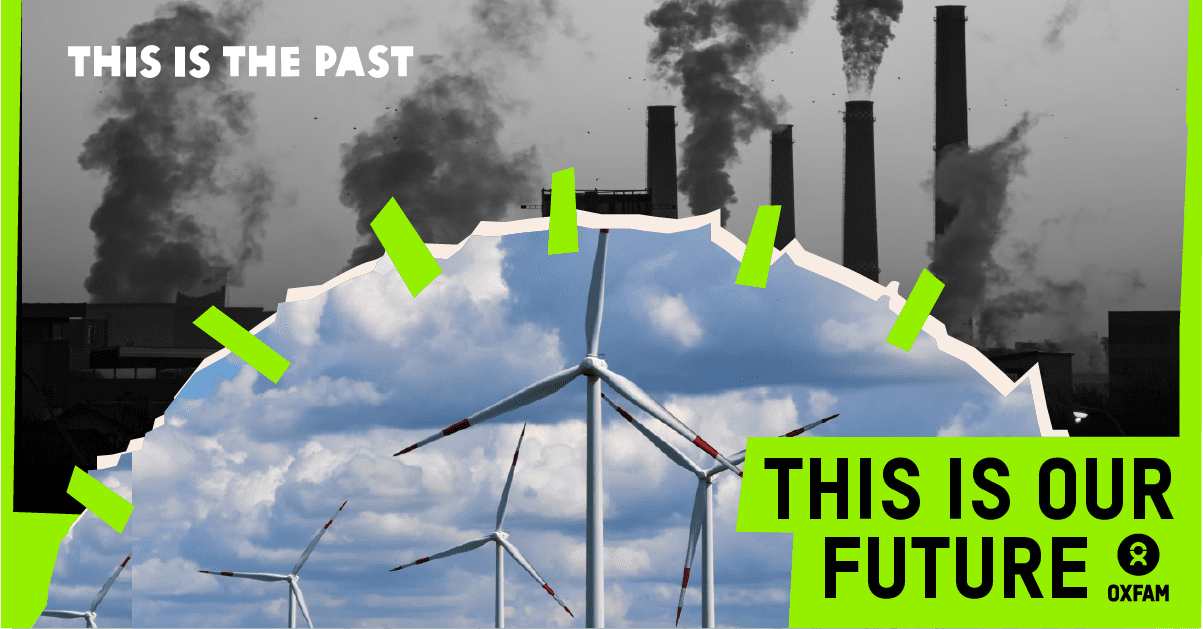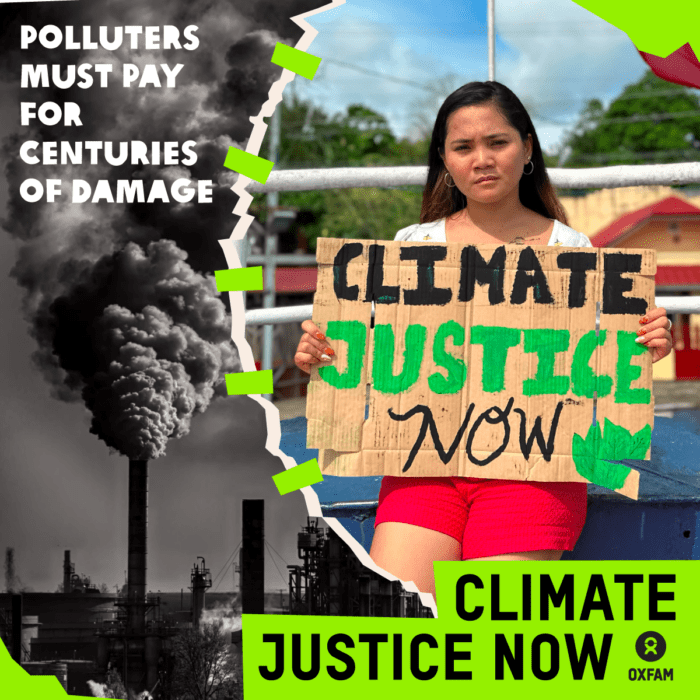Billionaire wealth surges by $2 trillion in 2024, three times faster than the year before, while the number of people living in poverty has barely changed since 1990
- Oxfam predicts there will be at least five trillionaires a decade from now.
- 204 new billionaires were minted in 2024, nearly four every week.
- Sixty percent of billionaire wealth is now derived from inheritance, monopoly power or crony connections, as Oxfam argues that “extreme billionaire wealth is largely unmerited.”
- Richest 1 percent in the Global North extracted $30 million an hour from the Global South in 2023.
- Oxfam urges governments to tax the richest to reduce inequality, end extreme wealth, and dismantle the new aristocracy. Former colonial powers must address past harms with reparations.
Global billionaire wealth grew by $2 trillion in 2024 alone, equivalent to roughly $5.7 billion a day, at a rate three times faster than the year before. An average of nearly four new billionaires were minted every week. In Aotearoa New Zealand, billionaire wealth increased in 2024 by $5 billion NZD ($12 million NZD per day).
Meanwhile, the number of people living in poverty has barely changed since 1990, according to World Bank data. It takes just 6 days for someone in the top 1% of New Zealand to make what the average person in the bottom 50% makes all year.
In 2024, the number of billionaires rose to 2,769, up from 2,565 in 2023. Their combined wealth surged from $13 trillion to $15 trillion in just 12 months. This is the second largest annual increase in billionaire wealth since records began. The wealth of the world’s ten richest men grew on average by almost $100 million a day —even if they lost 99 percent of their wealth overnight, they would remain billionaires.
Last year, Oxfam predicted the emergence of the first trillionaire within a decade. However, with billionaire wealth accelerating at a faster pace this projection has expanded dramatically —at current rates the world is now on track to see at least five trillionaires within that timeframe.
This ever-growing concentration of wealth is enabled by a monopolistic concentration of power, with billionaires increasingly exerting influence over industries and public opinion.
Oxfam publishes “Takers Not Makers” today as business elites gather in the Swiss resort town of Davos and billionaire Donald Trump, backed by the world’s richest man Elon Musk, is inaugurated as President of the United States.
“The capture of our global economy by a privileged few has reached heights once considered unimaginable. The failure to stop billionaires is now spawning soon-to-be trillionaires. Not only has the rate of billionaire wealth accumulation accelerated —by three times— but so too has their power,” said Oxfam International Executive Director Amitabh Behar.
“The crown jewel of this oligarchy is a billionaire president, backed and bought by the world’s richest man Elon Musk, running the world’s largest economy. We present this report as a stark wake up-call that ordinary people the world over are being crushed by the enormous wealth of a tiny few,” said Behar.
The report also shines a light on how, contrary to popular perception, billionaire wealth is largely unearned —60 percent of billionaire wealth now comes from inheritance, monopoly power or crony connections. Unmerited wealth and colonialism —understood as not only a history of brutal wealth extraction but also a powerful force behind today’s extreme levels of inequality— stand as two major drivers of billionaire wealth accumulation.
Oxfam Aotearoa’s Executive Director, Jason Myers said, “New Zealand is not immune from the grotesque global trend of billionaires getting richer while the number of people living in poverty remains stubbornly high. Here in Aotearoa, it takes just 6 days for someone in the top 1% to make what the average person in the bottom 50% makes all year.”
Oxfam’s calculates that 36 percent of billionaire wealth is now inherited. Research by Forbes found that every billionaire under 30 has inherited their wealth, while UBS estimates that over 1,000 of today’s billionaires will pass on more than $5.2 trillion to their heirs over the next two to three decades.
Many of the super-rich, particularly in Europe, owe part of their wealth to historical colonialism and the exploitation of poorer countries. For example, the fortune of billionaire Vincent Bolloré, who has put his sprawling media ‘empire’ at the service of France’s nationalist right, was built partly from colonial activities in Africa.
This dynamic of wealth extraction persists today: vast sums of money still flow from the Global South to countries in the Global North and their richest citizens, in what Oxfam’s report describes as modern-day colonialism.
- The richest 1 percent in Global North countries like the US, UK and France extracted $30 million an hour from low- and middle-income countries in 2023.
- Global North countries control 69 percent of global wealth, 77 percent of billionaire wealth and are home to 68 percent of billionaires, despite making up just 21 percent of the global population.
- The average Belgian has about 180 times more voting power in the largest arm of the World Bank than the average Ethiopian.
Low- and middle-income countries spend on average nearly half of their national budgets on debt repayments, often to rich creditors in New York and London. This far outstrips their combined investment in education and healthcare. Between 1970 and 2023, Global South governments paid $3.3 trillion in interest to Northern creditors.
The history of empire, racism and exploitation has left a lasting legacy of inequality. Today, the average life expectancy of Africans is still more than 15 years shorter than that of Europeans. Research shows that wages in the Global South are 87 to 95 percent lower than wages in the Global North for work of equal skill. Despite contributing 90 percent of the labor that drives the global economy, workers in low- and middle-income countries receive only 21 percent of global income.
Globally, women are more often found in the most vulnerable forms of informal employment, including domestic work, than their male counterparts. Migrant workers in rich countries earn, on average, about 13 percent less than nationals, with the wage gap rising to 21 percent for women migrants.
“The ultra-rich like to tell us that getting rich takes skill, grit and hard work. But the truth is most wealth is taken, not made. So many of the so-called ‘self-made’ are actually heirs to vast fortunes, handed down through generations of unearned privilege. Untaxed billions of dollars in inheritance is an affront to fairness, perpetuating a new aristocracy where wealth and power stays locked in the hands of a few,” said Behar.
“Meanwhile, the money desperately needed in every country to invest in teachers, buy medicines and create good jobs is being siphoned off to the bank accounts of the super-rich. This is not just bad for the economy —it’s bad for humanity.”
Myers continued, “It doesn’t have to be this way, and a more equal future is entirely possible. Poverty is a policy choice, and our latest report is a clarion call directed to those in power who have the ability to make decisions that work for all instead of a few.”
Oxfam is calling on governments to act rapidly to reduce inequality and end extreme wealth:
- Radically reduce inequality. Governments need to commit to ensuring that, both globally and at a national level, the incomes of the top 10 percent are no higher than the bottom 40 percent. According to World Bank data, reducing inequality could end poverty three times faster. Governments must also tackle and end the racism, sexism and division that underpin ongoing economic exploitation.
- Tax the richest to end extreme wealth. Global tax policy should fall under a new UN tax convention, ensuring the richest people and corporations pay their fair share. Tax havens must be abolished. Oxfam’s analysis shows that half of the world’s billionaires live in countries with no inheritance tax for direct descendants. Inheritance needs to be taxed to dismantle the new aristocracy.
- End the flow of wealth from South to North. Cancel debts and end the dominance of rich countries and corporations over financial markets and trade rules. This means breaking up monopolies, democratizing patent rules, and regulating corporations to ensure they pay living wages and cap CEO pay. Restructure voting powers in the World Bank, IMF and UN Security Council to guarantee fair representation of Global South countries. Former colonial powers must also confront the lasting harm caused by their colonial rule, offer formal apologies, and provide reparations to affected communities.
ENDS
Notes to editors
Download Oxfam’s report “Takers not Makers” and the methodology note.
All figures are in USD unless specified.
According to the World Bank, the actual number of people living on less than $6.85 a day has barely changed since 1990.
Forbes data indicates that the largest annual increase in billionaire wealth ($5.8 trillion) occurred in 2021, during the COVID-19 pandemic. It was driven largely by governments injecting trillions of dollars into the economy.
Oxfam calculates that 60 percent of billionaire wealth is either from crony or monopolistic sources or inherited. Specifically, 36 percent is inherited, 18 percent comes from monopoly power, and 6 percent is from crony connections.
Research by Forbes found that, for the first time since 2009, every billionaire under 30 inherited their wealth —“a sign that the ‘great wealth transfer’ has begun.”
According to UBS, more than 1,000 billionaires are expected to pass $5.2 trillion to their heirs over the next 20 to 30 years.
Vincent Bolloré bought several former colonial companies in Africa, taking advantage of the wave of privatizations spurred by the structural adjustment programs imposed by the IMF and the World Bank in the 1990s. This strategy enabled Bolloré to build an extensive transport-logistics network in Africa, operating in 42 ports across the continent. .
Amin Mohseni-Cheraghlou’s research shows that the average Belgian has about 180 times more voting power in the International Bank for Reconstruction and Development (IBRD), the largest arm of the World Bank, when compared to the average Ethiopian.
On average, low- and middle-income countries are spending 48 percent of their national budgets on debt repayments.
In 2023, the average life expectancy in Africa is 63.8 years, compared to 79.1 years in Europe.
Jason Hickel, Morena Hanbury Lemos and Felix Barbour found that “Southern wages are 87 percent to 95 percent lower than Northern wages for work of equal skill. While Southern workers contribute 90 percent of the labor that powers the world economy, they receive only 21 percent of global income.”
According to the ILO, women in the informal economy are more often found in the most vulnerable situations, for instance as domestic workers, home-based workers or contributing family workers, than their male counterparts.
ILO data also shows that migrant workers in high-income countries earn about 12.6 percent less than nationals, on average. The pay gap between men nationals and migrant women in high-income countries is estimated at 20.9 percent, which is much wider than the aggregate gender pay gap in high-income countries (16.2 percent).









